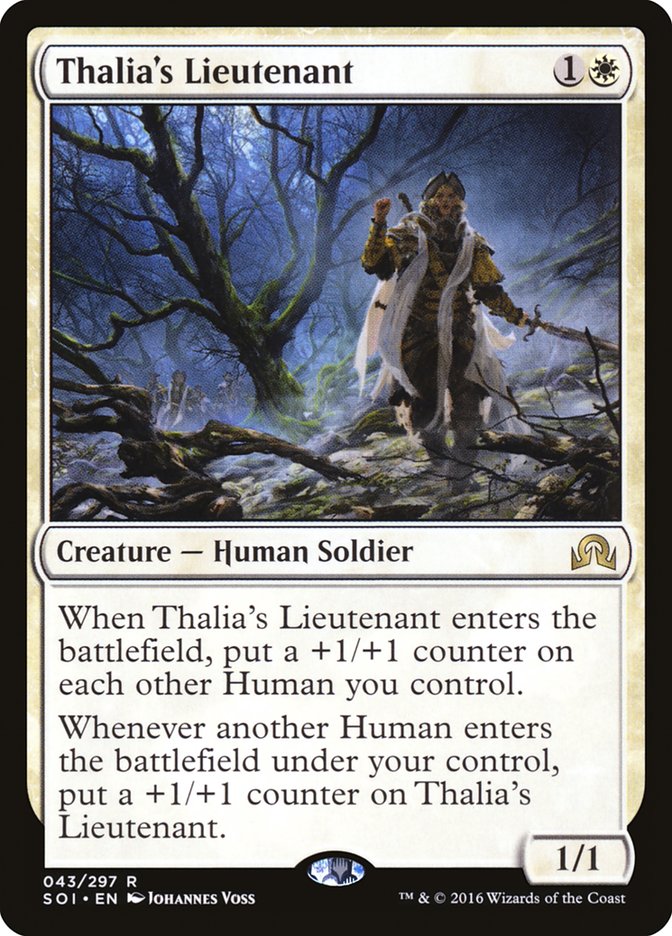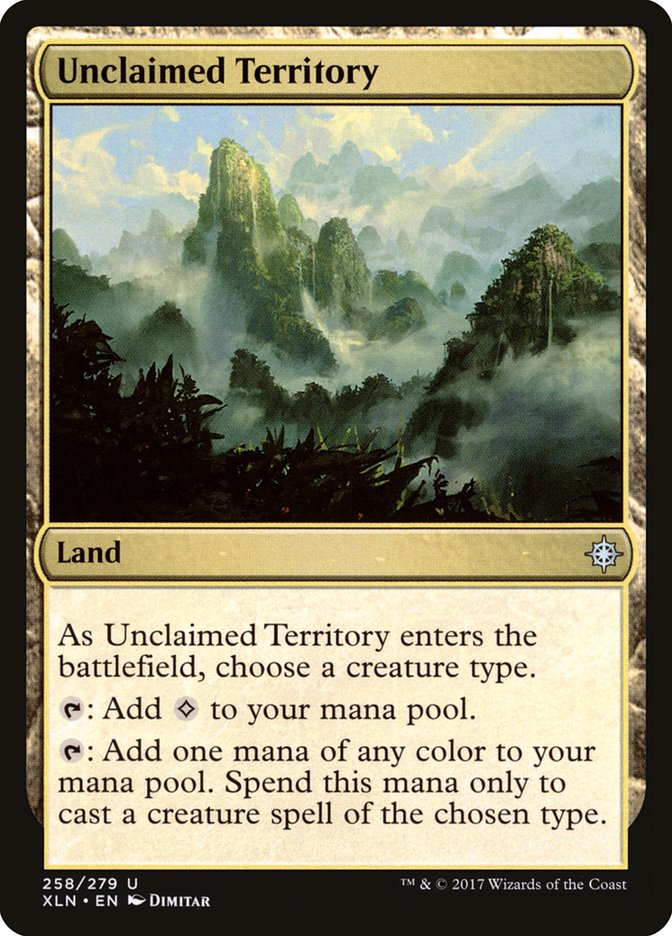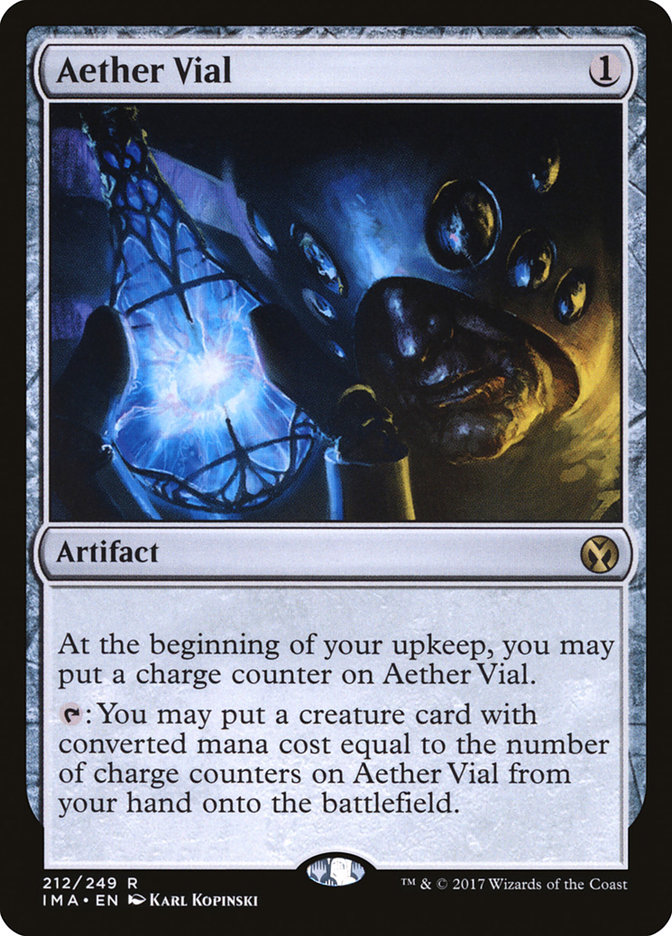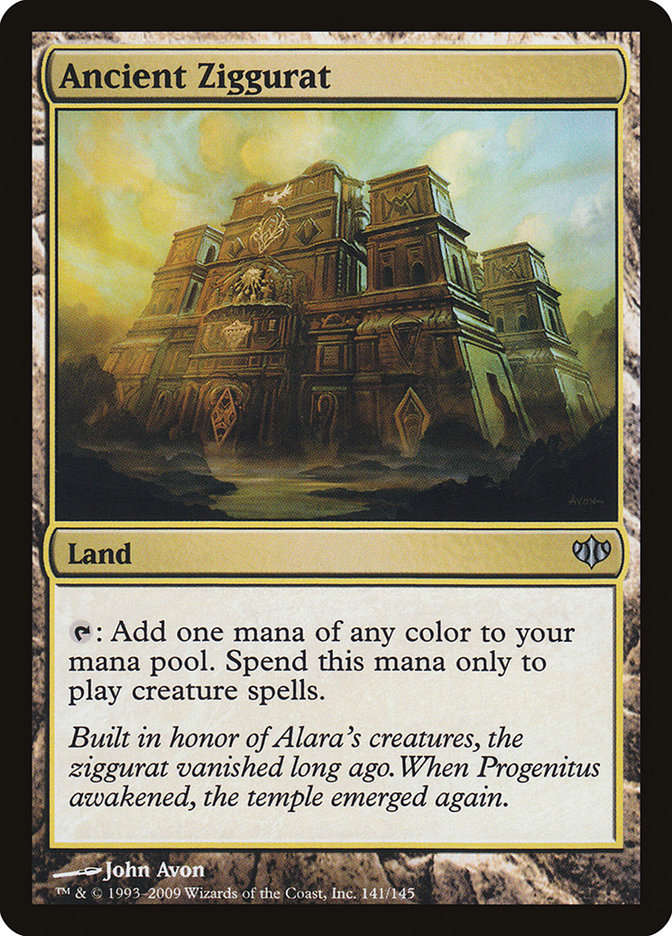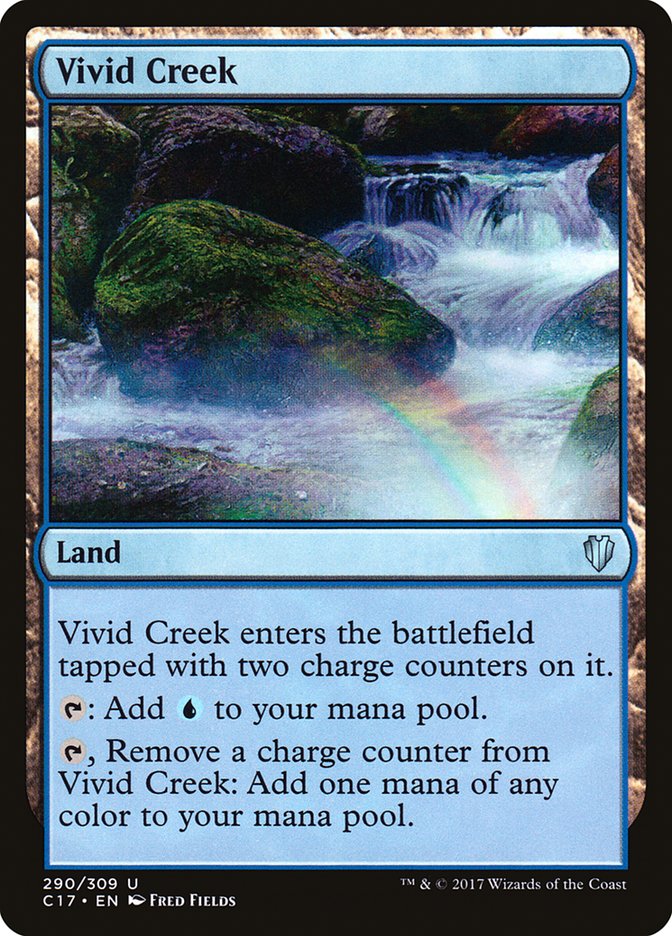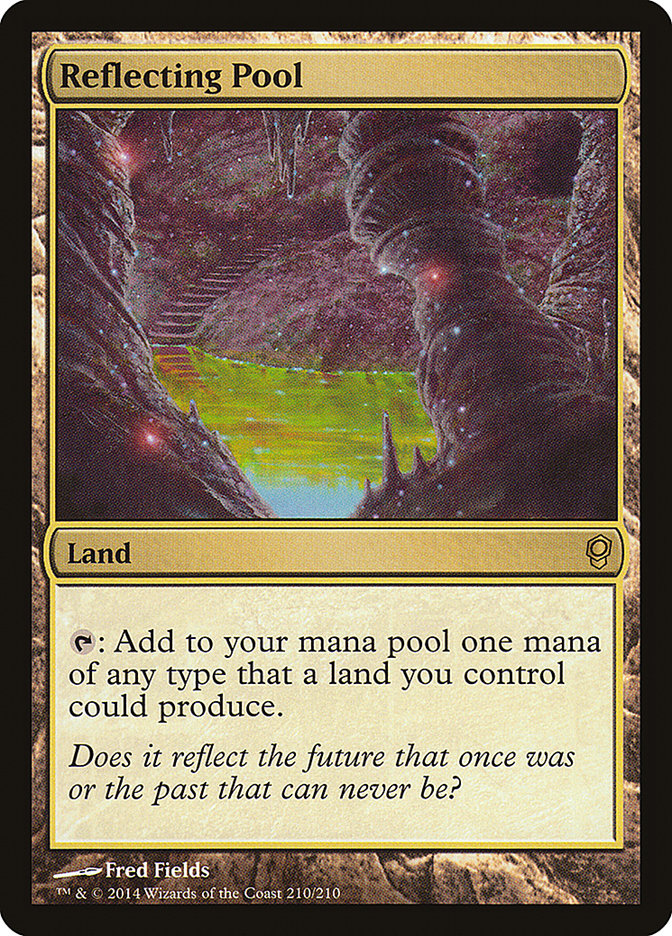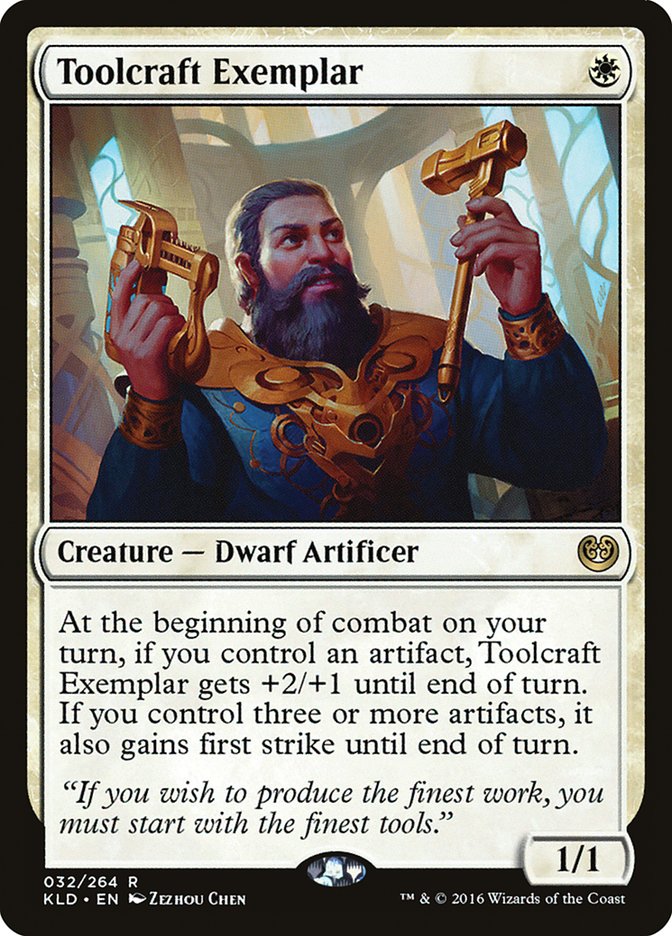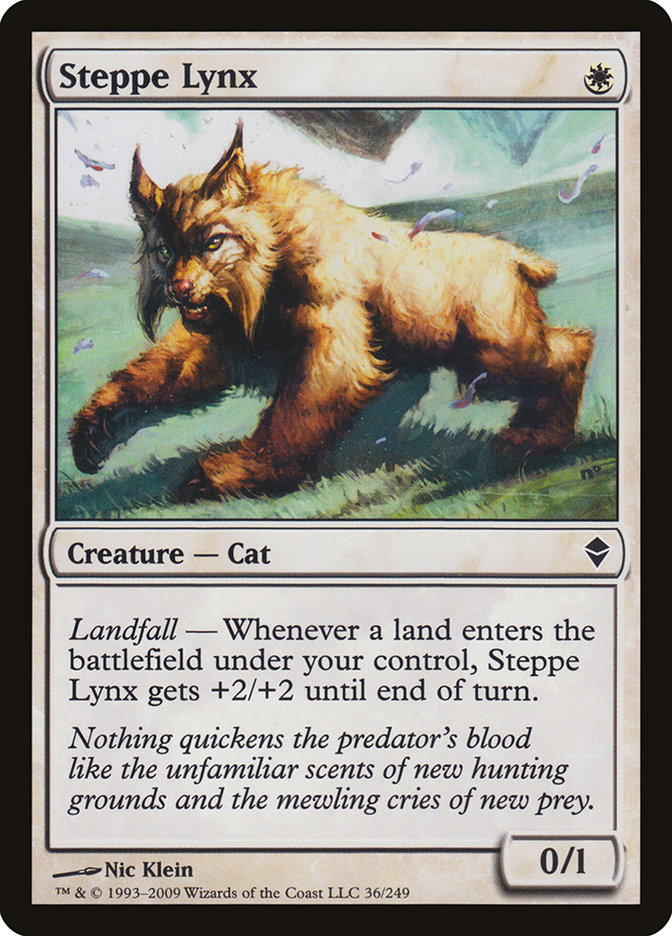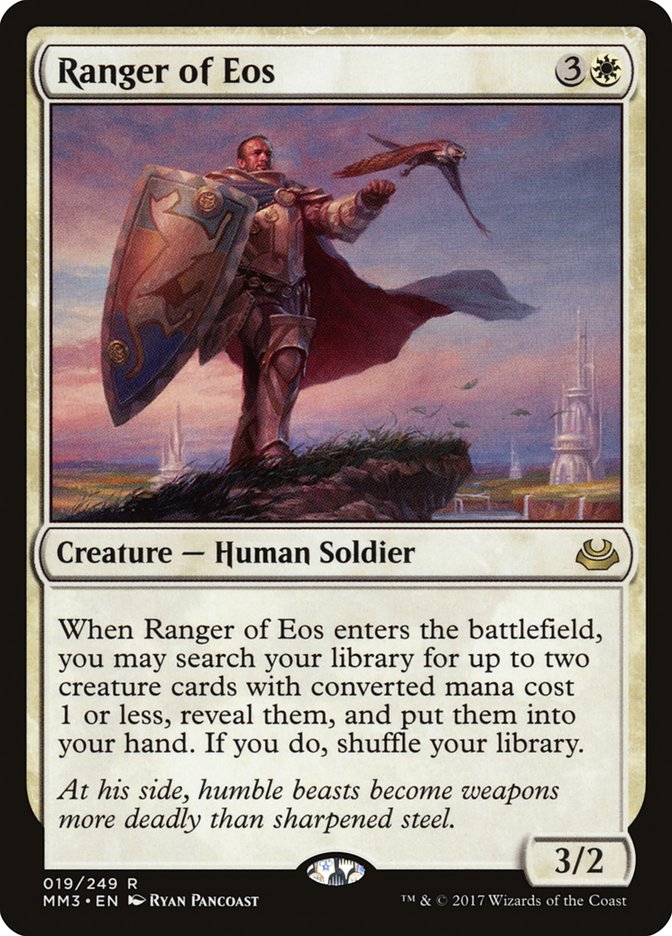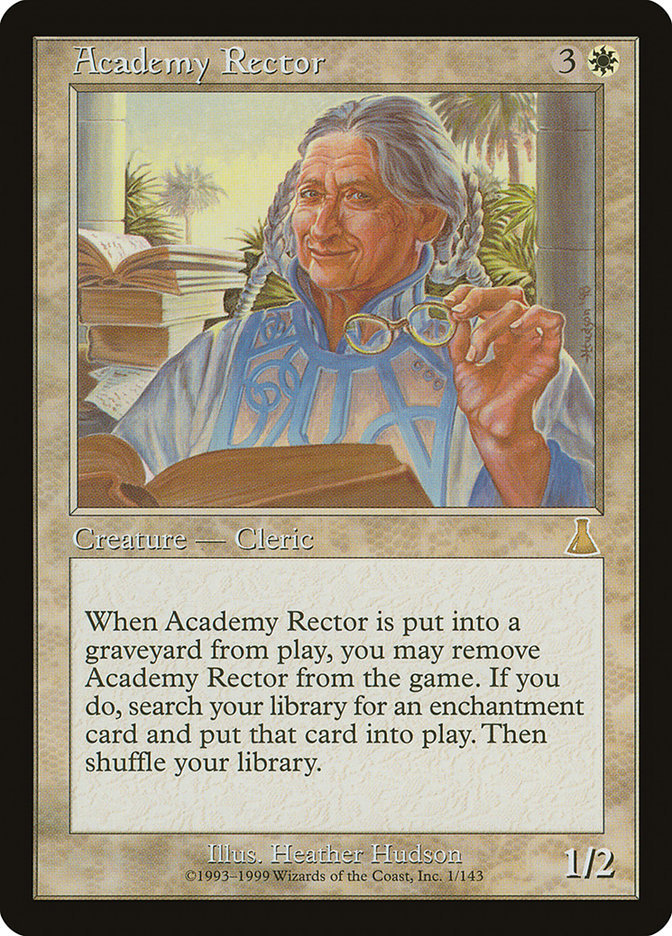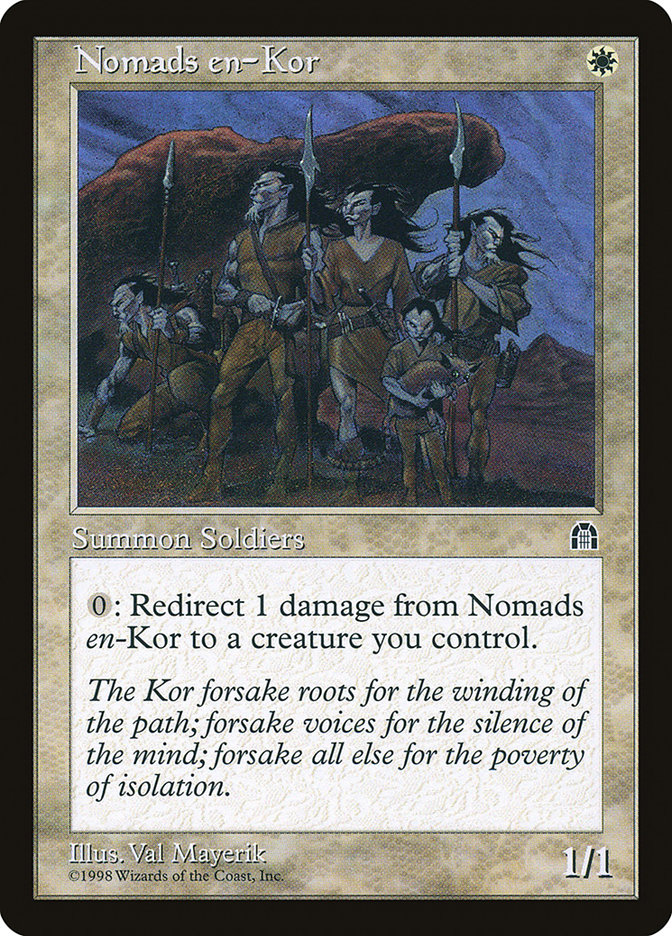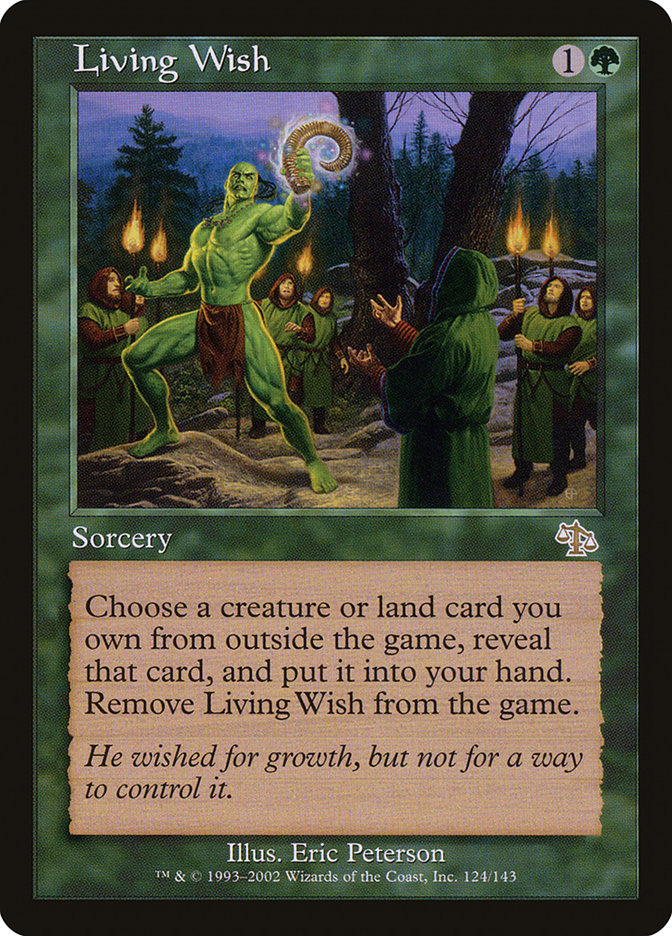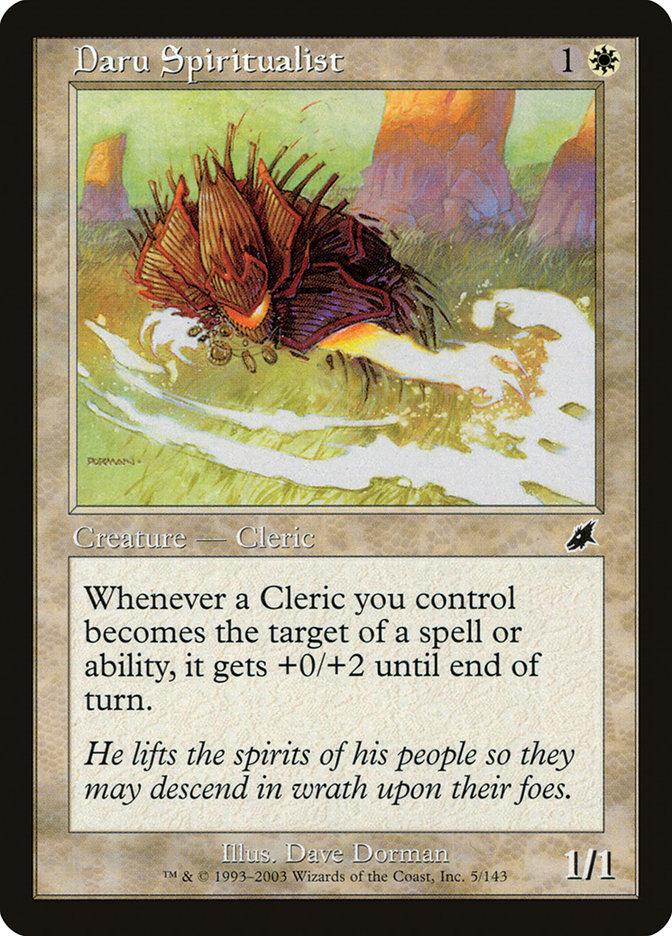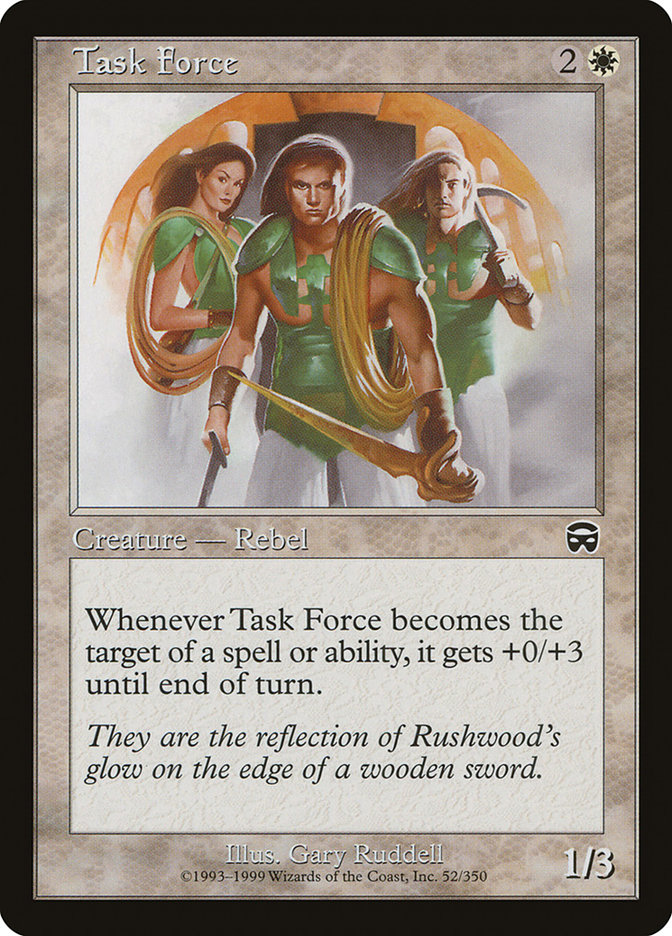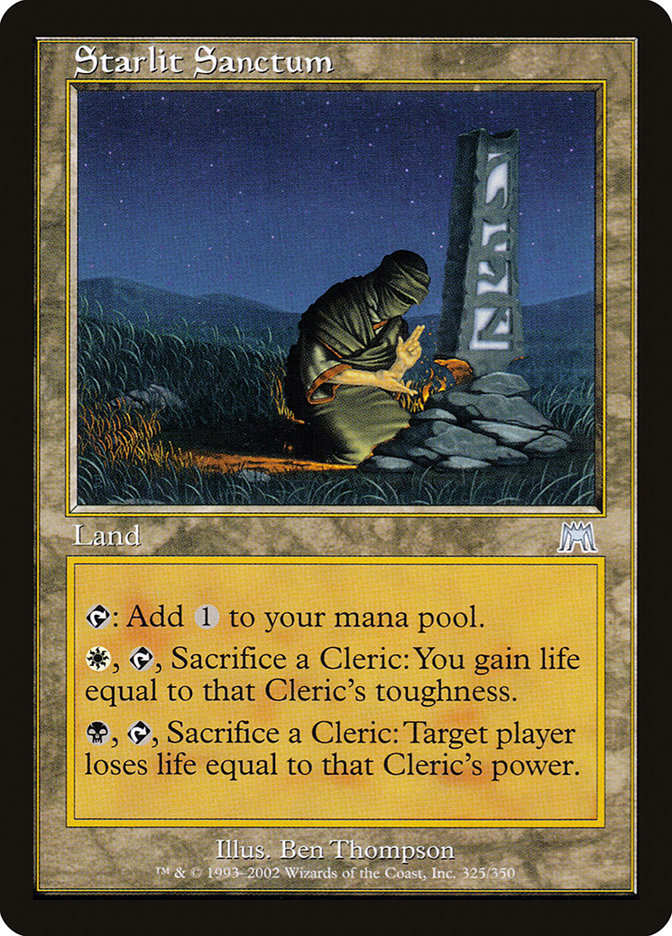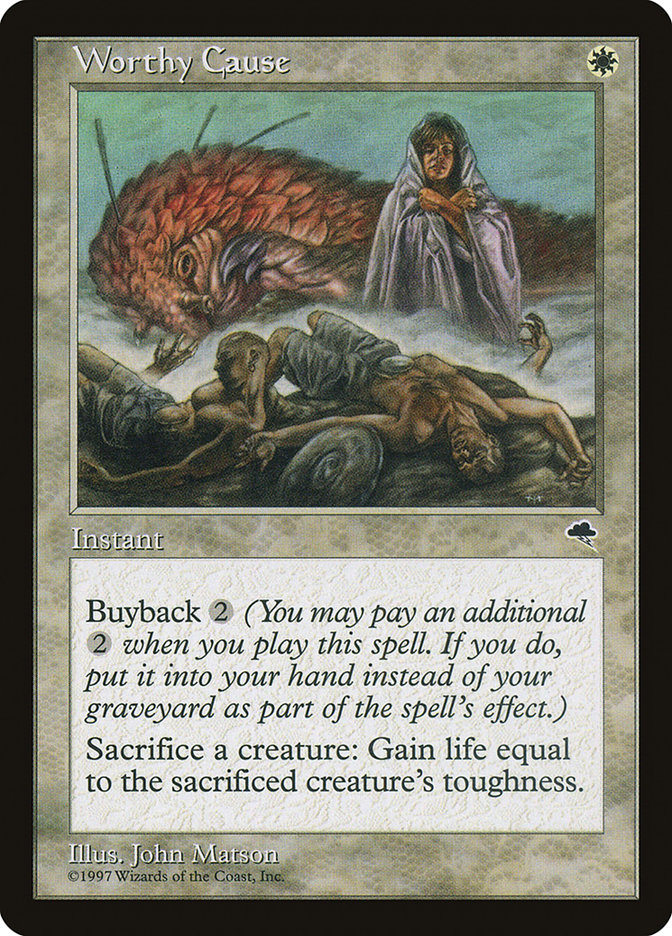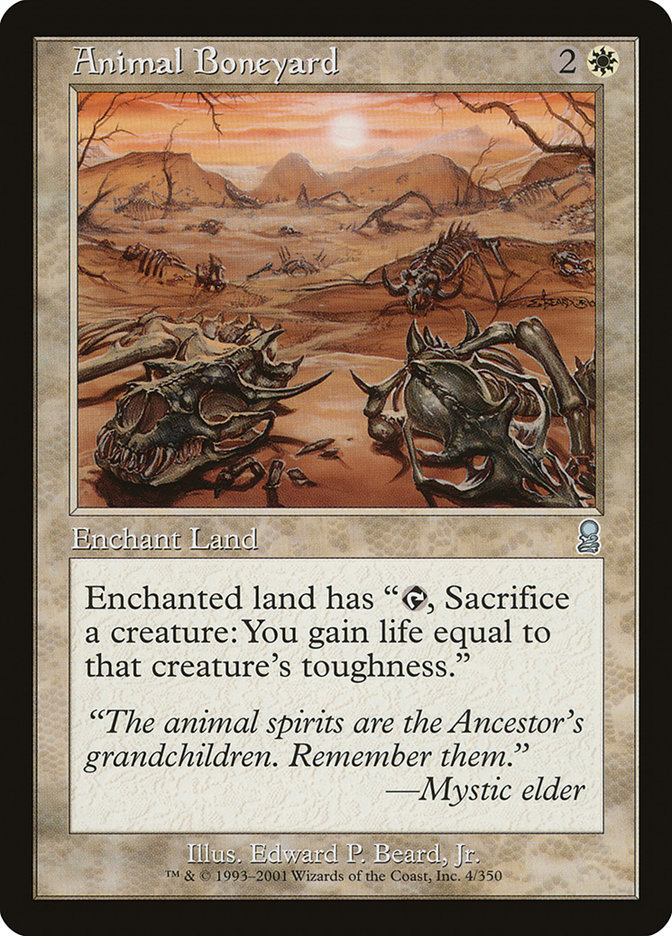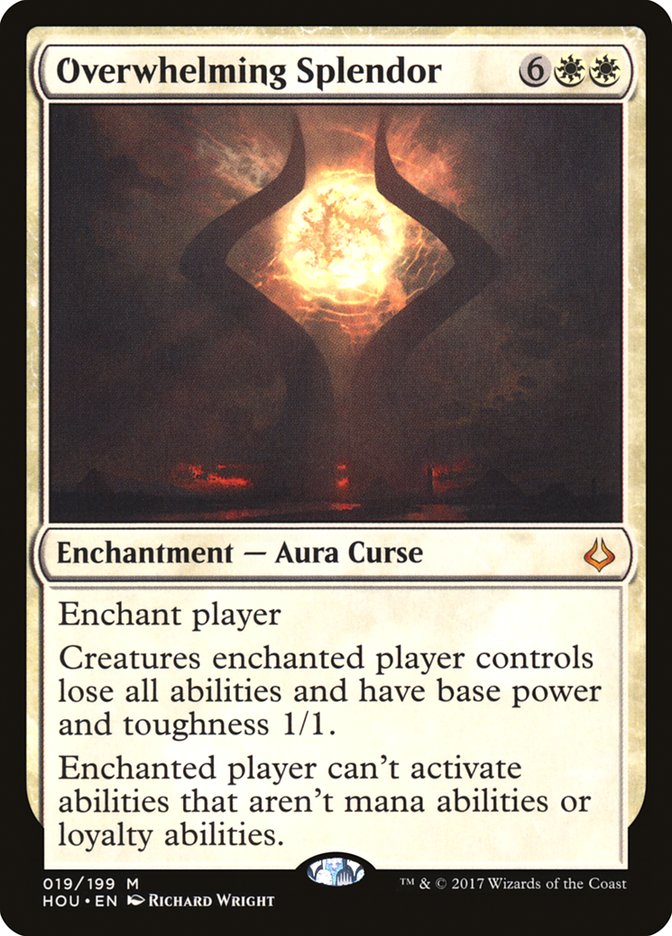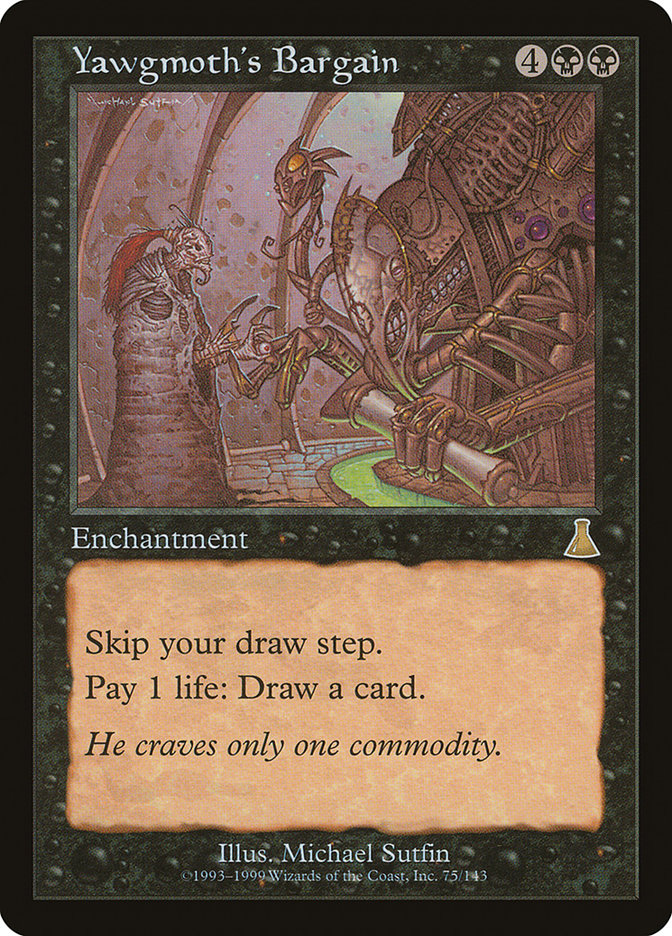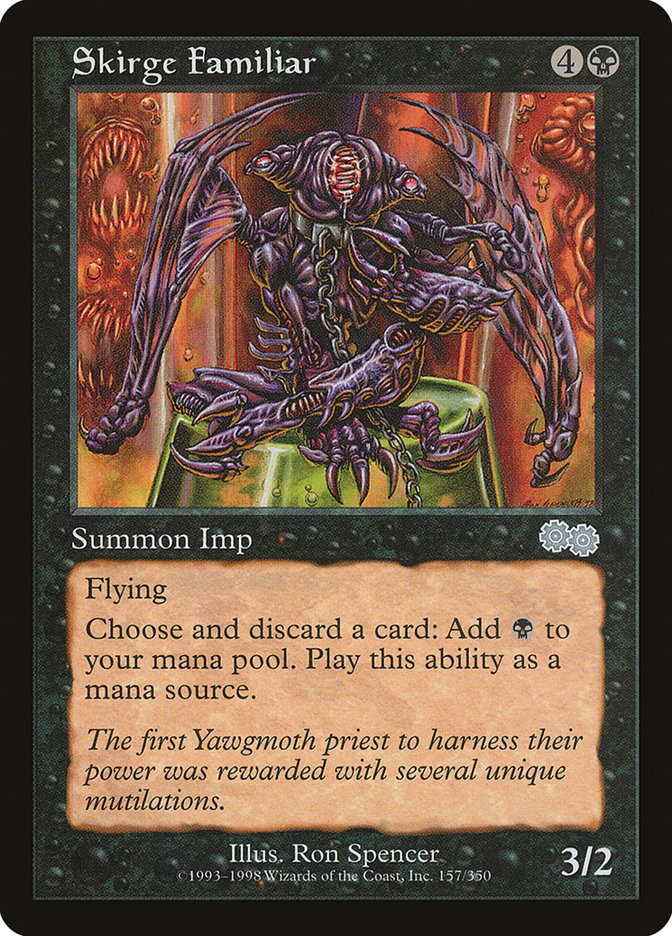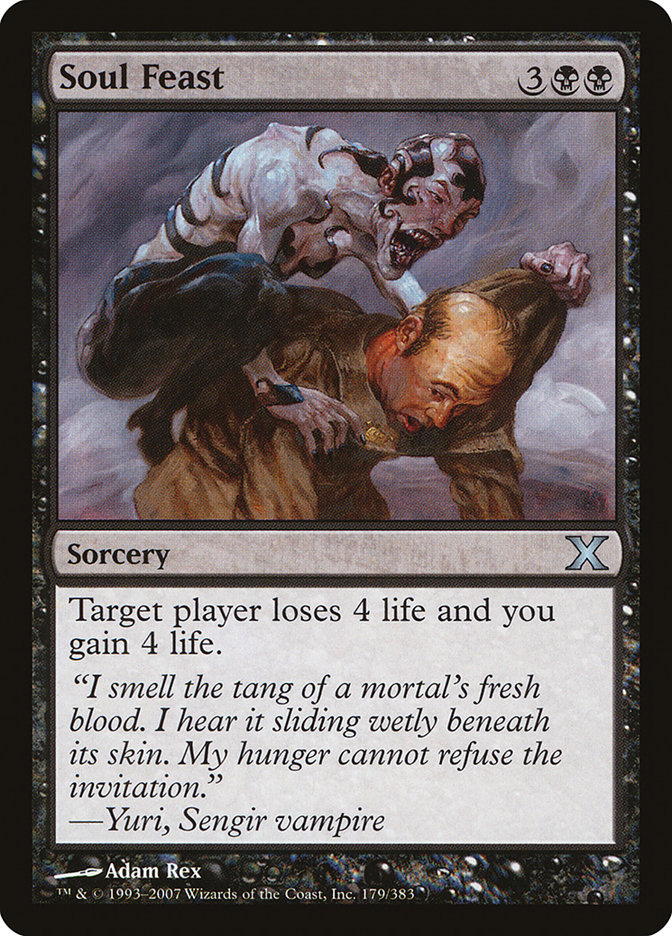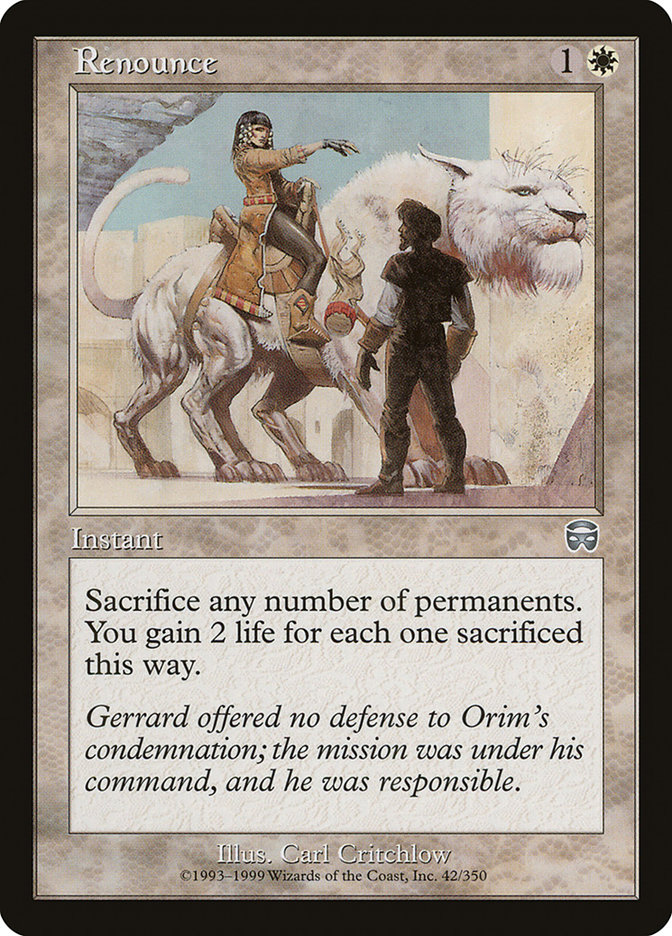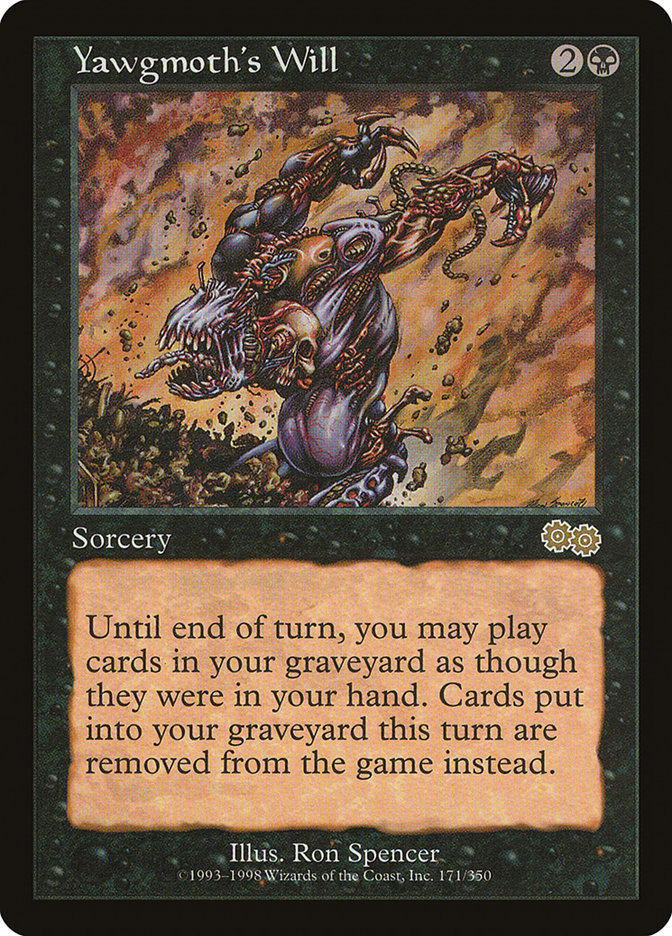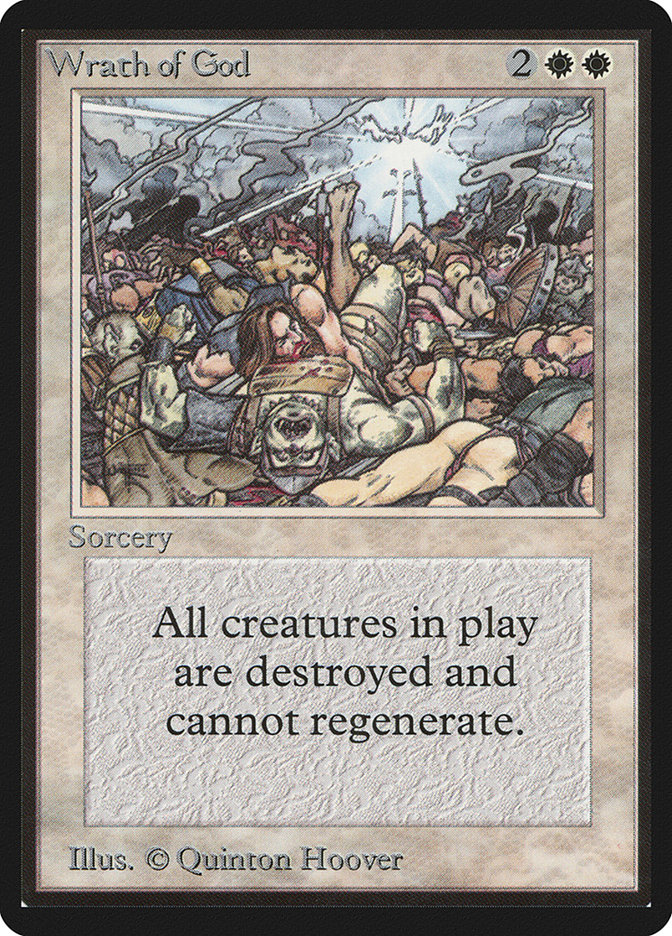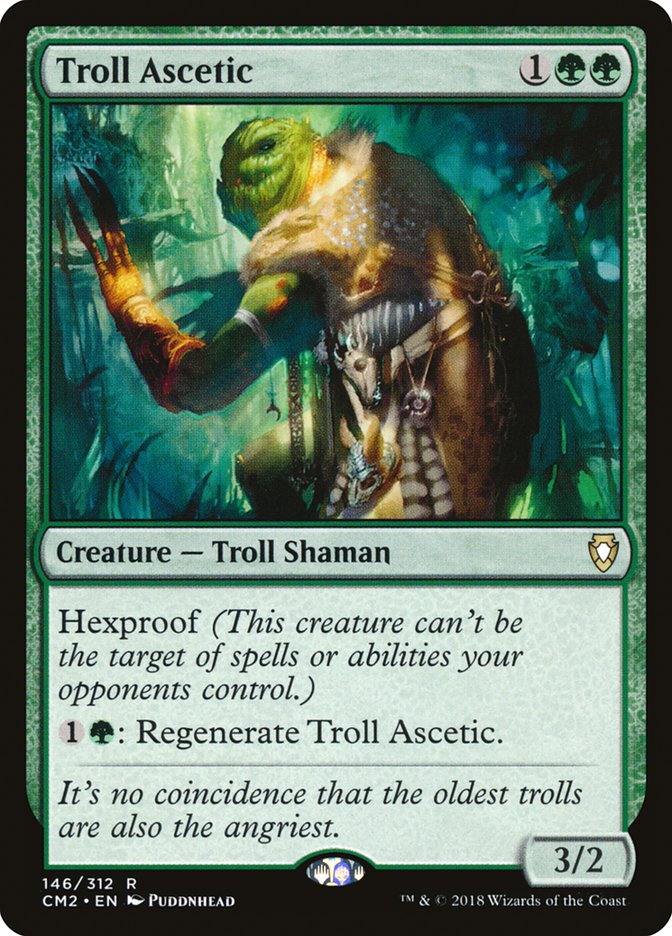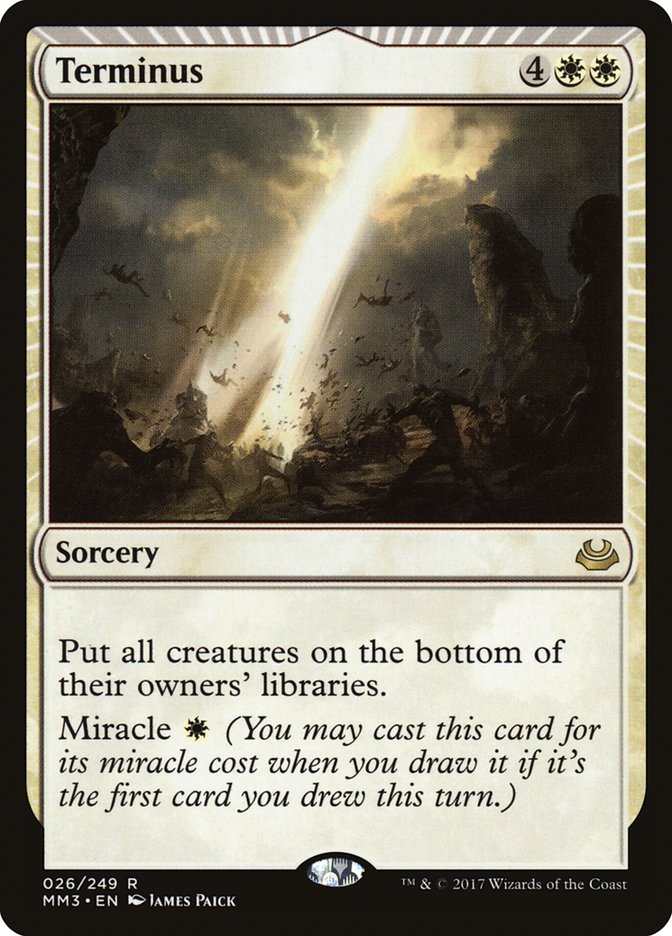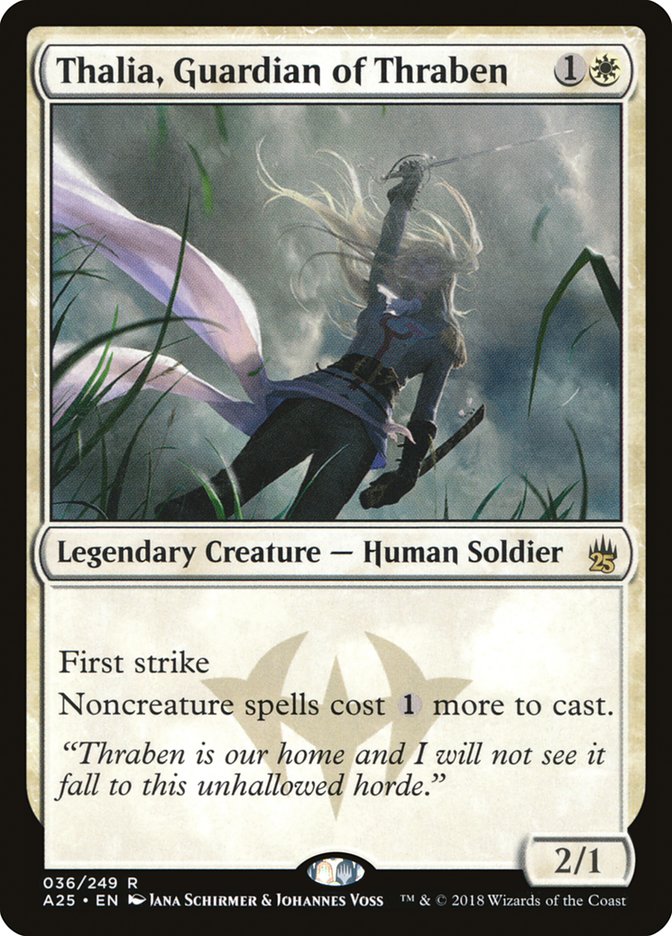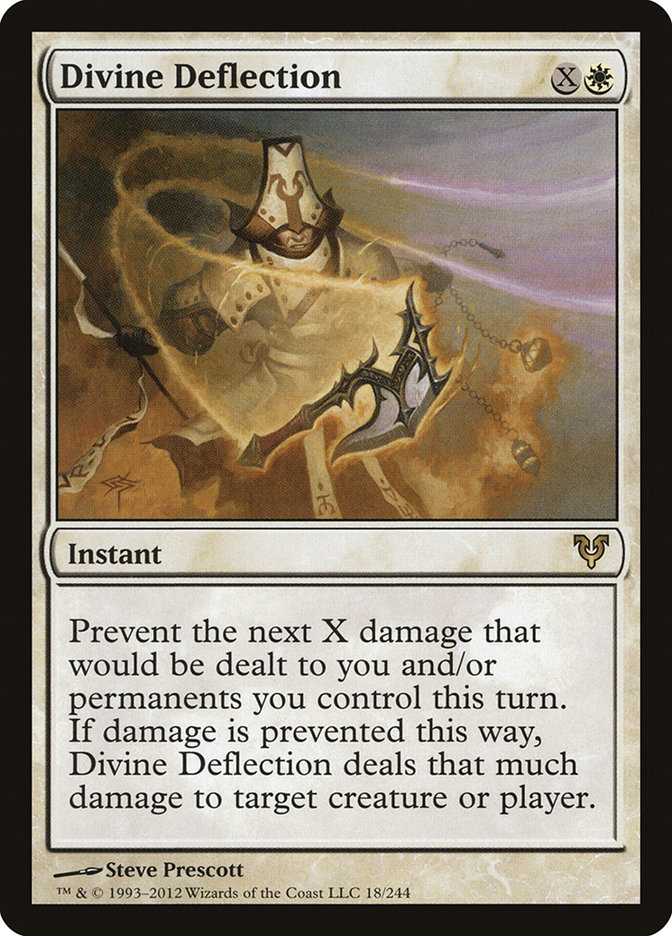All this month, to celebrate the 25th anniversary of Magic, we’re counting
down the top 25 cards of all-time of each color. Two weeks ago, the
countdown started
green
before last week’s
red
. Today, we kick things off white, with one of the most absurd tribal lords
in the game’s history.
#25: Thalia’s Lieutenant
Thalia’s Lieutenant wasn’t just a cornerstone to Human tribal decks in
multiple formats. It has been downright metagame-warping time and again. If
it had either one of its two abilities, it would still be a powerful force,
but when you consider both on the same two-drop, you’re talking about
consistently adding +5/+5 to +7/+7 to the table for just two mana.
Now, you do have to be playing all or nearly all Humans to push this card
this hard, but Humans are one of the “tribes” that have had the most
intrinsically good cards, anyway. And while this has most commonly
manifested in 1-3 color aggro decks in Standard, we’ve reached a critical
mass of five-color tribal fixing in Modern that allows Five-Color Humans to
not only be very real but very powerful.
Creatures (37)
- 4 Meddling Mage
- 4 Noble Hierarch
- 4 Phantasmal Image
- 4 Champion of the Parish
- 4 Thalia, Guardian of Thraben
- 1 Kessig Malcontents
- 4 Mantis Rider
- 4 Reflector Mage
- 4 Thalia's Lieutenant
- 4 Kitesail Freebooter
Lands (19)
Spells (4)

The printing of Unclaimed Territory stacked with Cavern of Souls, Ancient
Ziggurat, and Aether Vial combine to give Five-Color Humans some of the
most reliable mana in the format, despite absolutely bananas color
requirements.
In many ways, it’s like the Five-Color Humans decks are built like the old
Five-Color Control decks built around Vivid lands and Reflecting Pool,
except all their lands enter the battlefield untapped.
Javier Dominguez and Andrea Mengucci both top 8’d the most recent Modern
Pro Tour, in Bilbao, with a very straightforward take on Five-Color Humans.
Phantasmal Image is the only creature in the deck not cast naturally with
Cavern of Souls or Unclaimed Territory, but both can name Illusion.
Notably, there’s not a single non-creature card in the entire deck that
requires colored mana, since so very few of the lands in the deck can
produce colored mana for them.
While Toolcraft Exemplar doesn’t crack our top 25, it does deserve an
honorable mention for coming close. Why was Toolcraft Exemplar pushed so
hard? Well, at the time, they wanted to make some white aggro cards people
would play that wouldn’t just keep pushing Thalia’s Lieutenant even harder…
And that’s a really, really hard act to follow.
#24: Path to Exile
Path to Exile is such a ubiquitous staple, it will surely appear in lists
every day this week. The “fixed” Swords to Plowshares, Path to Exile has
been one of the more influential removal spells in the game’s history,
helping shape manabases with basics to helping cap how fast and explosive
certain aggro strategies with combo elements can kill (such as Affinity and
Infect).
While red and black have tons of good cheap removal, Path to Exile is
somewhat of an outlier for white, a color with versatile but often more
expensive options.
Creatures (22)
- 4 Figure of Destiny
- 4 Ethersworn Canonist
- 4 Knight of the White Orchid
- 2 Ranger of Eos
- 4 Steppe Lynx
- 4 Student of Warfare
Lands (23)
Spells (15)

Paul Rietzl’s
Pro Tour Amsterdam tournament report
is an all-time banger. The white aggro deck he won with, built in
conjunction with Gabriel Nassif, Kai Budde, and their legal team, made
extra use of Path to Exile as a surprise way to pump a Steppe Lynx or two
in combat.
No player has enjoyed as much continued success with Steppy Boy as Hall of
Famer Paul Rietzl, and the card deserves an honorable mention, just barely
missing the top 25.
Speaking of honorable mentions, Ranger of Eos is another crazy good card
that was within striking distance of the top 25, and a good case could
definitely be made for it, thanks to its ability to find Figure of Destiny,
Martyr of Sands, and/or Wild Nacatl over the years. While it has frequently
been maindecked, it’s also been a popular sideboard card, perfect for
grinding out attrition-based post-sideboard games, such as the Kithkin deck
Cedric Phillips piloted to a top 8 finish in PT Kyoto 2009:
Creatures (20)
Planeswalkers (4)
Lands (25)
Spells (11)
Sideboard

Nowadays, the idea of aggro decks slowing down and going bigger after
sideboarding is commonplace, but Cedric’s use of it here was especially
futuristic for that time period.
#23: Academy Rector
Academy Rector is one of those confusing combo creatures where the question
of which part of the combo was really the broken part, comes into play. For
instance, consider the Life combo deck Ryuichi Arita’s used to Top 8 PT
Columbus 2004:
Creatures (16)
Lands (23)
Spells (21)

It sure seems like the Academy Rector isn’t necessarily as big a deal as
Living Wish or the en-Kor exploits.
The zero-cost activation of the en-Kor creatures combined with Daru
Spiritualist or Task Force to build a creature with an arbitrarily large
toughness.
Then, all it takes is a Starlit Sanctum, Worthy Cause, or Animal Boneyard,
and you’ve got an arbitrarily large amount of life.
However, if we were to consider just how many formats would be ruined by
Academy Rector, we start to get a different picture. For instance, can you
imagine how messed up Standard would be right now?
And it’s not like it didn’t come up when Academy Rector was Standard-legal.
I think it just gets lost in the insanity that was Urza block
sometimes. One of the best examples is the Sabre Bargain deck Jon Finkel
beat me playing to make the finals of the 2000 MTG Invitational in Kuala
Lumpur.
Creatures (8)
Lands (22)
Spells (30)
- 3 Yawgmoth's Bargain
- 4 Vampiric Tutor
- 4 Grim Monolith
- 2 Yawgmoth's Will
- 4 Dark Ritual
- 4 Soul Feast
- 3 Tooth of Ramos
- 3 Renounce
- 3 Voltaic Key
Sideboard

This list aspired to get a Yawgmoth’s Bargain down as fast as possible,
then draw enough cards to try to go “all the way off” the following turn,
usually with a Skirge Familiar.
Of course, if you played a Grim Monolith on turn two, you could
realistically play Academy Rector on turn three, then immediately sacrifice
it to Phyrexian Tower, giving you a Yawgmoth’s Bargain and three mana to
work with. Now, if you can just find a Dark Ritual and a Skirge Familiar,
you can convert your life to cards and cards to mana efficiently.
Soul Feast and Renounce fueled additional draws from the Bargain, and
Yawgmoth’s Will was eventually a way to get enough extra power to get over
the hump and actually finish someone off.
#22: Wrath of God
Wrath of God and Day of Judgment are actually extremely close, but the no
regeneration clause of Wrath of God really does matter a little.
Wrath of God started putting up big finishes right from the get go, and
while it took home the title in the first Magic World Championship, as
discussed
two weeks ago
, it also reached the finals the following year, in the hands of Marc
Hernandez.
Lands (20)
Spells (42)
- 3 Armageddon
- 3 Wrath of God
- 3 Swords to Plowshares
- 3 Icy Manipulator
- 4 Howling Mine
- 3 Winter Orb
- 2 Land Tax
- 1 Ivory Tower
- 1 Balance
- 2 Earthquake
- 2 Circle of Protection: Red
- 2 Island Sanctuary
- 3 Fellwar Stone
- 3 Disenchant
- 4 Black Vise
- 3 Zuran Orb
Sideboard

While the first World Championship had been Type 1 (Vintage), the second
year’s were the newly created Type 2 (Standard) format. Marc’s list was the
original inspiration for the Prison deck Mark Justice used to top 8 the
very first Magic Pro Tour
the following year.
As for Day of Judgment?
It’s seen its fair share of successes, to be sure. After all, Wrath of God
isn’t always legal!
Creatures (1)
Planeswalkers (4)
Lands (26)
Spells (29)

While not the card’s great triumph, this list was an absolute blast to
play, due in no small part to two big factors: Almost no one thought
control was possible, and Jace, the Mind Sculptor had arrived and was
shockingly underrated by the community at large.
While Supreme Verdict doesn’t make our list on account of being
multi-colored, Terminus deserves an honorable mention.
Terminus is a cross-format star that has countless successes trying to
exploit it, as well as countless just “using it fair” times. It’s very
first Pro Tour, it took home the trophy in the very able hands of Alexander
Hayne, setting off the Miracles revolution.
Spells (29)

#21: Thalia, Guardian of Thraben
One of the most unassuming cards to appear in the top 25 white cards,
Thalia, Guardian of Thraben has basically been a tier 1 staple in nearly
every format since its printing.
While we already saw the power of Thalia in powered formats, where she can
hate out combo decks and slow down sweepers, such as in the Five-Color
Humans deck above, the card has also enjoyed a great deal of success as
“just a good card for aggressive, creature-heavy decks.”
Creatures (27)
- 3 Fiend Hunter
- 4 Champion of the Parish
- 3 Avacyn's Pilgrim
- 3 Mayor of Avabruck
- 3 Thalia, Guardian of Thraben
- 2 Restoration Angel
- 3 Sigarda, Host of Herons
- 4 Silverblade Paladin
- 2 Druid's Familiar
Lands (25)
Spells (8)

While Thalia’s ability is so good, she would likely see a fair bit of play
even without first strike, it’s actually the first strike that really gets
her over the finish line. It’s remarkable just how often it has been
largely impactful on combat, whether creating or breaking battlefield
stalls, as well as combining with burn or combat tricks, such as Divine
Deflection.
Redirecting a couple key points of damage can not only save your Champion
of the Parish from dying but might also provide the extra damage needed for
your Thalia to take down a larger blocker without first strike.
The top 25 white cards are an eclectic bunch, and I’m going to be
interested to see how many of the rest are guessed, as a couple of ’em
might be a little surprising…


